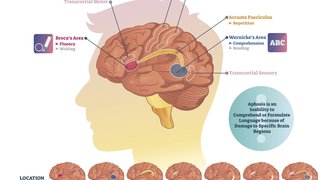
Imagine a world where a young person visits her primary care doctor for an annual physical or because she has a cold. While listening to her heart and taking her blood pressure, the doctor also asks a series of questions about mental health. The young person’s responses to the questions identify her as high risk for developing depression. She is referred to a mental health professional who closely assesses the young person’s risk for depression through a simple blood test or imaging scan, and the prevention or treatment process begins immediately. If treatment is needed, the patient is immediately matched with the most effective therapy for her based on her symptoms and pathology, as identified in the blood or imaging test.
The good news is that this ideal scenario is possible. The bad news is this is a far cry from the current process in place to diagnose and treat mental illness.
A Trial-and-Error Process
Currently, there is no widespread, measurement-based approach to diagnosing depression at the primary care level, so treatment and diagnosis are often delayed, if they occur at all. In fact, 85 percent of people with depression or bipolar disorder never see a mental health specialist. When a patient does receive a diagnosis, the treatment process is trial and error. A patient may try multiple medications and other therapies before seeing results, and the process can take months or even years.
Yet, for the first time in my 25 years of studying depression, I feel like we are finally at the threshold of being able to change the current situation. How? By studying thousands of people with depression, as well as those at risk for depression, in order to uncover the nature of each individual’s disease so we can match patients with the exact treatment they need.
Changing the Future of Depression
Like those who began the Framingham Heart Study in 1948 to identify risk factors for heart disease, we are at a similar point with depression. As such, we are in the process of recruiting patients for two complementary studies that could change the future of depression diagnosis and treatment.
I want to give an overview of these two studies so you can feel the same hope we feel about their potential impact. We encourage you to share this information with friends or loved ones who may want to participate. The only way we’ll be successful in our mission is to engage as many people as possible in our efforts.
We are only in the beginning stages of gathering data to help us reach our goal of changing the future of depression diagnosis and treatment. However, we are learning more and more about this disease every day, with every patient.
I ask that you take a moment to imagine the scenario I first described and how different the future could look if we achieve our depression research goals, and I invite you to follow our progress on our website or call us at 214-648-HELP (4357) to learn more about the groundbreaking clinical studies for depression that are underway.
- The Dallas 2K study, based at UT Southwestern, is studying 2,000 patients with depression over a 10-year period to identify a specific test that could determine which treatment methods are best for individual patients. Imagine being able to do a blood test that tells your physician how you will react to a certain medication. This could be the end of the trial-and-error method of treating depression.
- The Resilience in Adolescent Development (RAD) study, also based at UT Southwestern, is recruiting young people, ages 10-24, to better understand biological and behavioral factors that can help identify those at high risk for depression and bipolar disorder and determine what works to improve resiliency. We need 1,500 young people who will stick with us for a decade – which seems like a long time, but it will be worth it.











